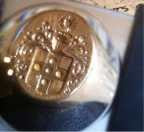Well, How Did We Get here?
For those of us who love mid-century modern architecture and for those of us who are curious about how all of this came to be and what it means to be modern, well, there are numerous resources. I am in the middle of reading Marshall Berman's All That Is Solid Melts Into Air. It was published in 1982. Check out the preface from Google books below:
The modern condition is also well represented in this from 1981:
Berman goes on to write:
To be modern is to find ourselves in an environment that promises us adventure, power, joy, growth, transformation of ourselves and the world - and, at the same time, that threatens to destroy everything we have, everything we know, everything we are. Modern environments and experiences cut across all boundaries of geography and ethnicity, of class and nationality, of religion and ideology: in this sense, modernity can be said to unite all mankind. But it is a paradoxical unity, a unity of disunity: it pours us all into a maelstrom of perpetual disintegration and renewal, of struggle and contradiction, of ambiguity and anguish....
You may ask yourself....
The modern condition is also well represented in this from 1981:
Berman goes on to write:
To be modern is to find ourselves in an environment that promises us adventure, power, joy, growth, transformation of ourselves and the world - and, at the same time, that threatens to destroy everything we have, everything we know, everything we are. Modern environments and experiences cut across all boundaries of geography and ethnicity, of class and nationality, of religion and ideology: in this sense, modernity can be said to unite all mankind. But it is a paradoxical unity, a unity of disunity: it pours us all into a maelstrom of perpetual disintegration and renewal, of struggle and contradiction, of ambiguity and anguish....
You may ask yourself....


<< Home